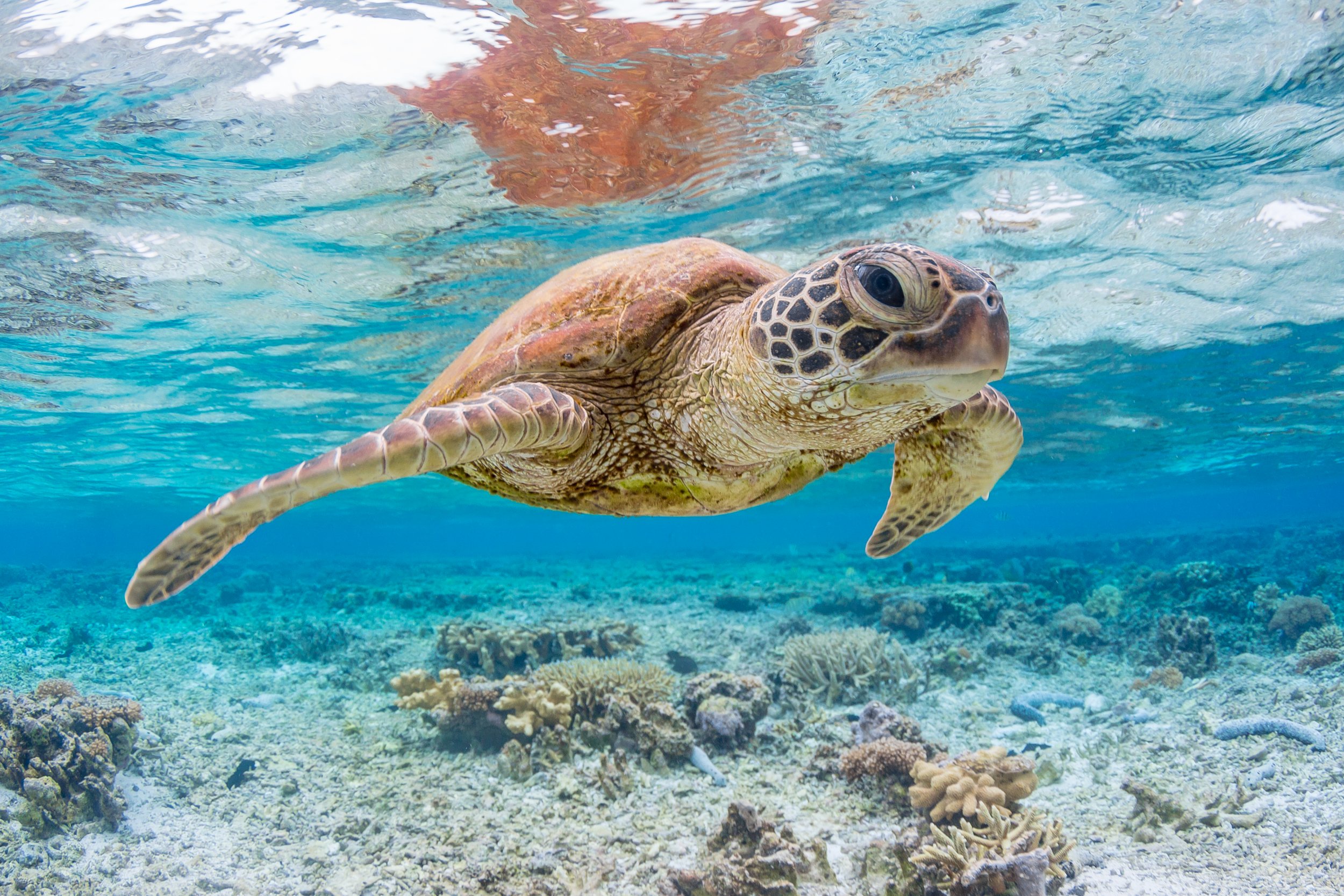
The population of endangered green sea turtles that inhabit the coral reefs of the Pacific Ocean is growing thanks to decades-long conservation efforts, according to scientists.
However, the study lays bare the threat still faced by the green turtle's neighbor the hawksbill, which is the most at-risk turtle species and listed as critically endangered by the International Union for Conservation of Nature (IUCN).
The team of researchers studied 53 coral islands, atolls and reefs in the Central, West and South Pacific Ocean in an area spanning 7,3000 linear km every April between 2002 and 2015. Divers counted turtles inhabiting four U.S. Pacific Island areas: American Samoa, the Hawaiian Archipelago, the Mariana Archipelago and the Pacific Remote Island Area complex.
To tally up the turtles, two divers were attached to boats, plunged 15m below sea level, and slowly monitored the ocean at a slow speed of 2.6 km/ph for around 50 minutes. As they explored the ocean, they noted the number of turtles, when and where they were spotted, the species and their size. The animals were categorized by age according to their size.
The divers spotted a total of 3,400 turtles: 90.1 percent were green turtles, and 8.3 percent were hawksbills. The remaining 1.6 percent were unidentified.
"Regional trends through time indicated turtle densities were stable to increasing," the authors of the study wrote in the journal Plos One.
Populations of green turtles—which are listed as endangered by IUCN—either grew or remained stable over the course of the study. The Hawaiian Islands saw the lowest density of green sea turtles, but the highest spikes in population growth each year. This suggests "that protective regulations may be paying off in allowing green turtle populations to rebound," the authors of the study wrote.
The most hawksbills, meanwhile, lived in the waters off American Samoa. However, the scarcity of hawksbills emphasizes how much still needs to be done to protect the animals, the authors warned.
Study co-author Sarah Becker, of the Monterey Bay Aquarium in California Becker, commented: "This study represents one of the largest sea turtle population surveys ever conducted, filling critical gaps on in-water abundance and drivers of population density.
"Across the tropical Pacific several locations held impressive densities of sea turtles, and in all regions densities were driven by bottom-up forces like ocean temperatures and productivity and top-down forces such as human impacts." Areas of the ocean measuring at 27.5˚C had the highest densities of turtles, the researchers found.
This research complements past studies where experts have estimated populations by counting turtle nests. While helpful, this doesn't provide an accurate picture of populations as it can take decades for the animals to mature, and they only come back to breeding grounds every few years.
In the 1970s conservation programs were launched to protect the creatures, after populations of coral-dwelling sea turtles depleted as the human populations in the areas grew. Hawksbill turtles were killed for their shells and green turtles for their meat. Despite these projects, their populations are still a fraction of what they once were. The animals continue to be threatened by plastics, fishing, pollution and the degradation of their coral reef habitats, according to the authors.
Brendan Godley, a professor of Conservation Science at the University of Exeter who was not involved in the study, told Newsweek: "The study is significant as it carries out repeatable monitoring across a series of 53 study sites spanning a vast area of the Pacific for over a decade to gain insights into the ecology of two species sea turtles."
"Studying their abundance at sea is much more likely to give us early warnings of population crashes as we can be counting juveniles yet to move into the breeding cohorts," he said.
Pointing out a limitation of the work, he explained: "As pointed out by the authors, the study is resource intensive and consequently challenging to keep funded in the long term. They hope to involve robotics or genetics in the future."
Addressing the dangers that sea turtles face, Godley continued: "For turtles in the Pacific, threats include directed harvest in some places, bycatch in fisheries, degradation of coral reef and seagrass habitats and the emerging problems of climate change and plastic pollution.
"With regard to the latter, it may be that baby sea turtles are heavily impacted by plastic ingestion in their open ocean juvenile phase which can cause them to be collocated with garbage patches. They are omnivorous and pretty unselective in this life stage and eat plastic pieces which really pose a chance of harm. There is a real possibility that population-level effects could be felt from this threat that could hold back population recovery being helped by protection on beaches and inshore waters."
Uncommon Knowledge
Newsweek is committed to challenging conventional wisdom and finding connections in the search for common ground.
Newsweek is committed to challenging conventional wisdom and finding connections in the search for common ground.
About the writer
Kashmira Gander is Deputy Science Editor at Newsweek. Her interests include health, gender, LGBTQIA+ issues, human rights, subcultures, music, and lifestyle. Her ... Read more
To read how Newsweek uses AI as a newsroom tool, Click here.








